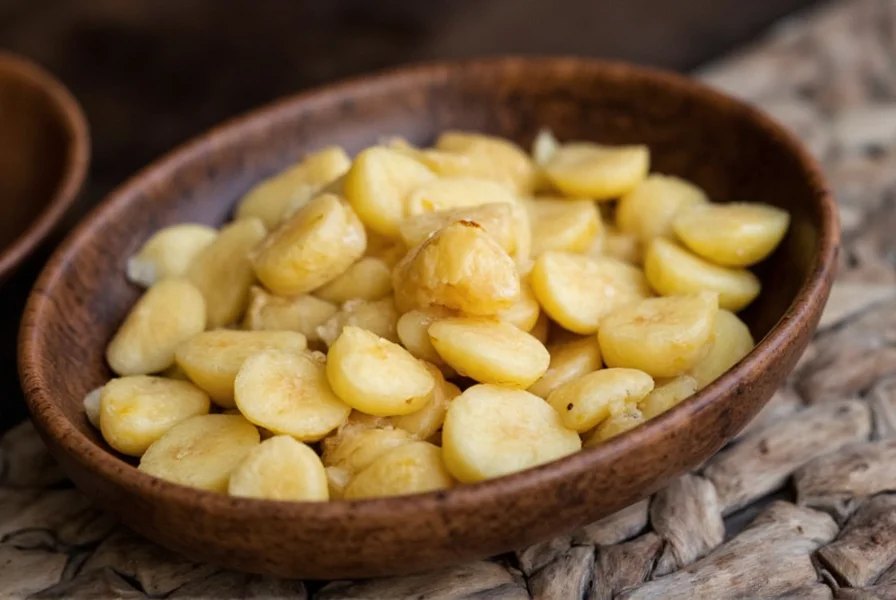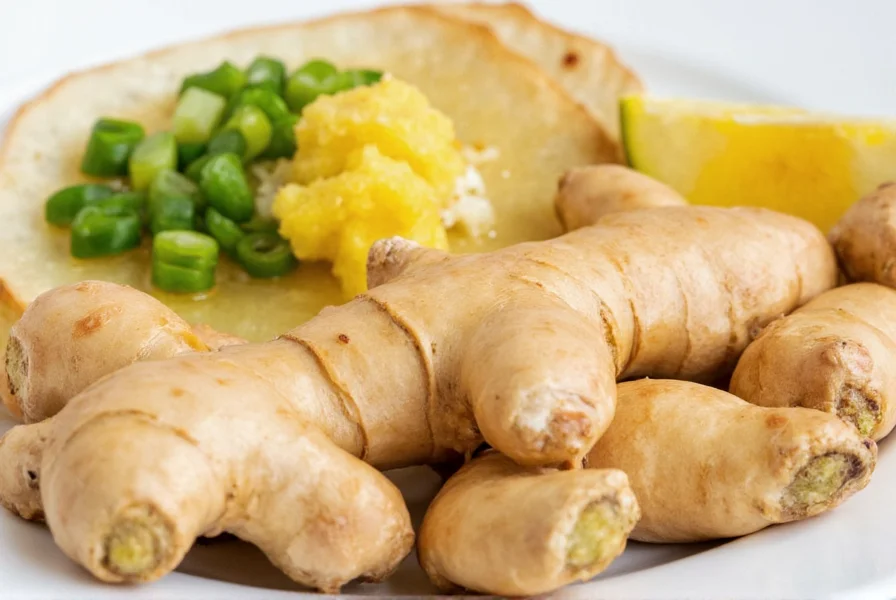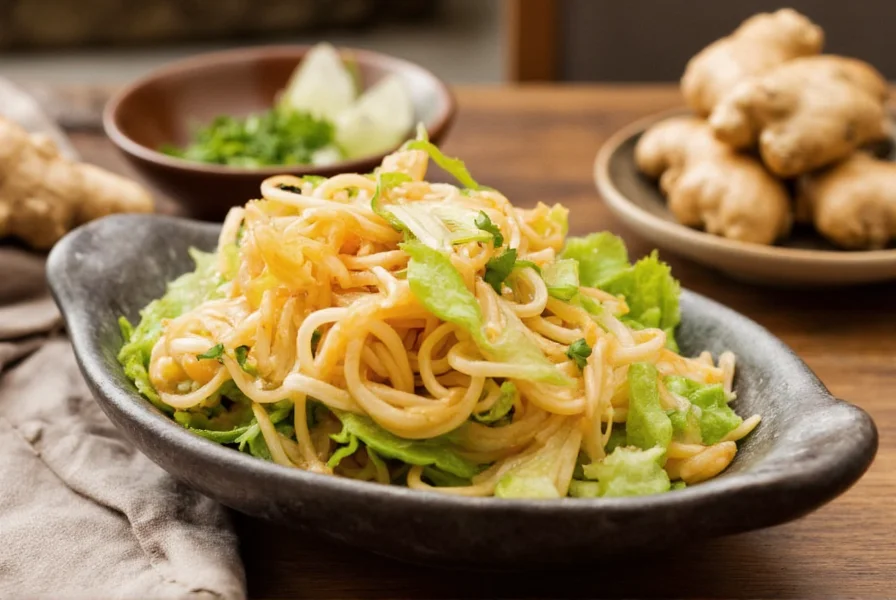When exploring the relationship between ginger and Asian culinary traditions, it becomes evident that this rhizome isn't merely an ingredient—it's a cornerstone of flavor development across the continent. The distinctive pungency and citrus-like notes of fresh ginger transform ordinary ingredients into extraordinary dishes through careful application at specific cooking stages.
The Historical Significance of Ginger in Asian Cultures
Ginger's journey through Asian history spans over 5,000 years, with archaeological evidence suggesting its cultivation began in Southeast Asia before spreading to China and India. Ancient Chinese medical texts from the Han Dynasty (206 BCE–220 CE) documented ginger's dual role as both culinary staple and medicinal remedy. Traditional Chinese Medicine practitioners prescribed ginger for digestive issues and cold symptoms long before modern science confirmed its bioactive compounds like gingerol and shogaol.
In Japan, ginger cultivation dates back to the Nara period (710–794 CE), where it became integral to both cuisine and ceremonial practices. The Japanese developed specialized varieties like shin-shoga (new ginger) with thinner skin and milder flavor compared to mature ginger. Korean culinary traditions incorporated ginger into jang (fermented sauces) and medicinal sujeonggwa (cinnamon-ginger punch), demonstrating its versatility beyond simple seasoning.
Different Ginger Varieties Across Asian Regions
While Western kitchens typically use only one type of ginger, Asian culinary traditions distinguish between several specialized varieties:
| Ginger Type | Primary Regions | Flavor Profile | Common Uses |
|---|---|---|---|
| Common Ginger (Zingiber officinale) | China, India, Thailand | Sharp, pungent, citrusy | Stir-fries, soups, marinades |
| Galangal (Alpinia galanga) | Thailand, Indonesia, Malaysia | Floral, pine-like, less spicy | Tom yum soup, curry pastes |
| Kencur (Kaempferia galanga) | Indonesia, Thailand | Eucalyptus, medicinal | Traditional medicines, spice pastes |
| Grated Young Ginger | Japan, Korea | Mild, sweet, less fibrous | Garnishes, delicate sauces |
Understanding these distinctions is crucial for authentic Asian cooking. Many Western recipes mistakenly substitute common ginger for galangal, resulting in dishes that lack the intended flavor balance. Professional chefs note that galangal's complex floral notes cannot be replicated with standard ginger, particularly in Thai and Indonesian specialties.

Regional Cooking Techniques and Signature Dishes
Each Asian culinary tradition has developed unique approaches to incorporating ginger:
Chinese Ginger Applications
In Chinese cuisine, ginger functions as both flavor foundation and medicinal ingredient. The classic technique involves slicing ginger thinly and stir-frying it in hot oil before adding other ingredients—a process called liao you that releases ginger's essential oils. This method appears in signature dishes like:
- Ginger-Scallion Chicken: Shredded chicken stir-fried with generous amounts of julienned ginger and scallions
- Winter Melon Soup: Clear broth featuring ginger slices to enhance the vegetable's natural sweetness
- Red-Braised Fish: Whole fish cooked with ginger to neutralize fishiness while adding depth
Japanese Ginger Traditions
Japanese cooking employs ginger more subtly, often using it raw as a garnish or pickled as gari (sushi ginger). Key applications include:
- Shoga-yaki: Pork loin pan-fried with grated ginger and soy-based sauce
- Miso Soup: A single slice of ginger added to individual bowls for aroma
- Tempura Dipping Sauce: Freshly grated ginger provides brightness against rich fried foods
Southeast Asian Ginger Usage
In Thai, Vietnamese, and Indonesian cuisines, ginger often appears in paste form combined with other aromatics:
- Tom Kha Gai (Thai coconut chicken soup): Galangal provides distinctive floral notes
- Pho (Vietnamese noodle soup): Ginger chars over open flame before simmering in broth
- Rendang (Indonesian curry): Ginger forms part of the essential rempah spice base

Professional Tips for Cooking with Asian Ginger Varieties
Seasoned chefs recommend these techniques for maximizing ginger's potential in Asian cooking:
- Timing matters: Add ginger early for deep flavor infusion or at the end for bright, fresh notes
- Preparation affects potency: Slicing yields milder flavor than mincing or grating
- Heat control is crucial: Ginger burns easily—cook over medium heat until fragrant (about 30 seconds)
- Complementary pairings: Ginger works exceptionally well with garlic, scallions, soy, and citrus
- Storage techniques: Freeze whole ginger root for easy grating without peeling
Many professional kitchens maintain different ginger preparations for specific applications. For instance, Chinese restaurants often keep pre-sliced ginger in oil for quick stir-fries, while Japanese kitchens prepare fresh grated ginger daily for delicate dishes. Understanding these nuances separates authentic Asian cooking from superficial interpretations.
Traditional Medicinal Applications Across Asia
Beyond culinary uses, ginger's therapeutic properties have been documented across Asian medical traditions:
- In Traditional Chinese Medicine, ginger tea with brown sugar treats colds and menstrual discomfort
- Korean grandmothers prepare saenggangcha (fresh ginger tea) for digestive issues
- Thai traditional medicine uses ginger compresses for muscle pain relief
- Japanese practitioners recommend pickled ginger after meals to aid digestion
Modern research supports many of these traditional uses, confirming ginger's anti-inflammatory properties and effectiveness against nausea. However, Asian culinary traditions have always recognized ginger's dual role as both flavor enhancer and wellness promoter—a holistic approach that continues to influence contemporary cooking philosophies.
Common Ginger Mistakes in Western Asian Cooking
Home cooks frequently make these errors when attempting Asian ginger dishes:
- Using dried ginger powder instead of fresh root
- Adding ginger too late in the cooking process
- Substituting common ginger for galangal in Southeast Asian recipes
- Peeling ginger with a knife instead of scraping with a spoon (removes less flesh)
- Using old, fibrous ginger that has lost its volatile oils
Professional chefs emphasize that fresh ginger should smell citrusy and clean, not musty or dry. The best ginger feels heavy for its size with smooth, taut skin. When properly selected and prepared, ginger transforms dishes with its complex flavor profile that balances heat, sweetness, and citrus notes.
Conclusion
Ginger's role in Asian cuisine extends far beyond simple seasoning—it represents a sophisticated understanding of flavor development that has evolved over millennia. From the fiery ginger slices in Sichuan cooking to the delicate grated ginger in Japanese sauces, each application demonstrates a nuanced approach to balancing heat, aroma, and flavor. By understanding the different ginger varieties, regional techniques, and proper preparation methods, cooks can authentically recreate the complex flavor profiles that define Asian culinary traditions. The next time you reach for ginger in your Asian cooking, consider the centuries of culinary wisdom behind this humble rhizome and how its proper application can transform your dishes from ordinary to extraordinary.











 浙公网安备
33010002000092号
浙公网安备
33010002000092号 浙B2-20120091-4
浙B2-20120091-4